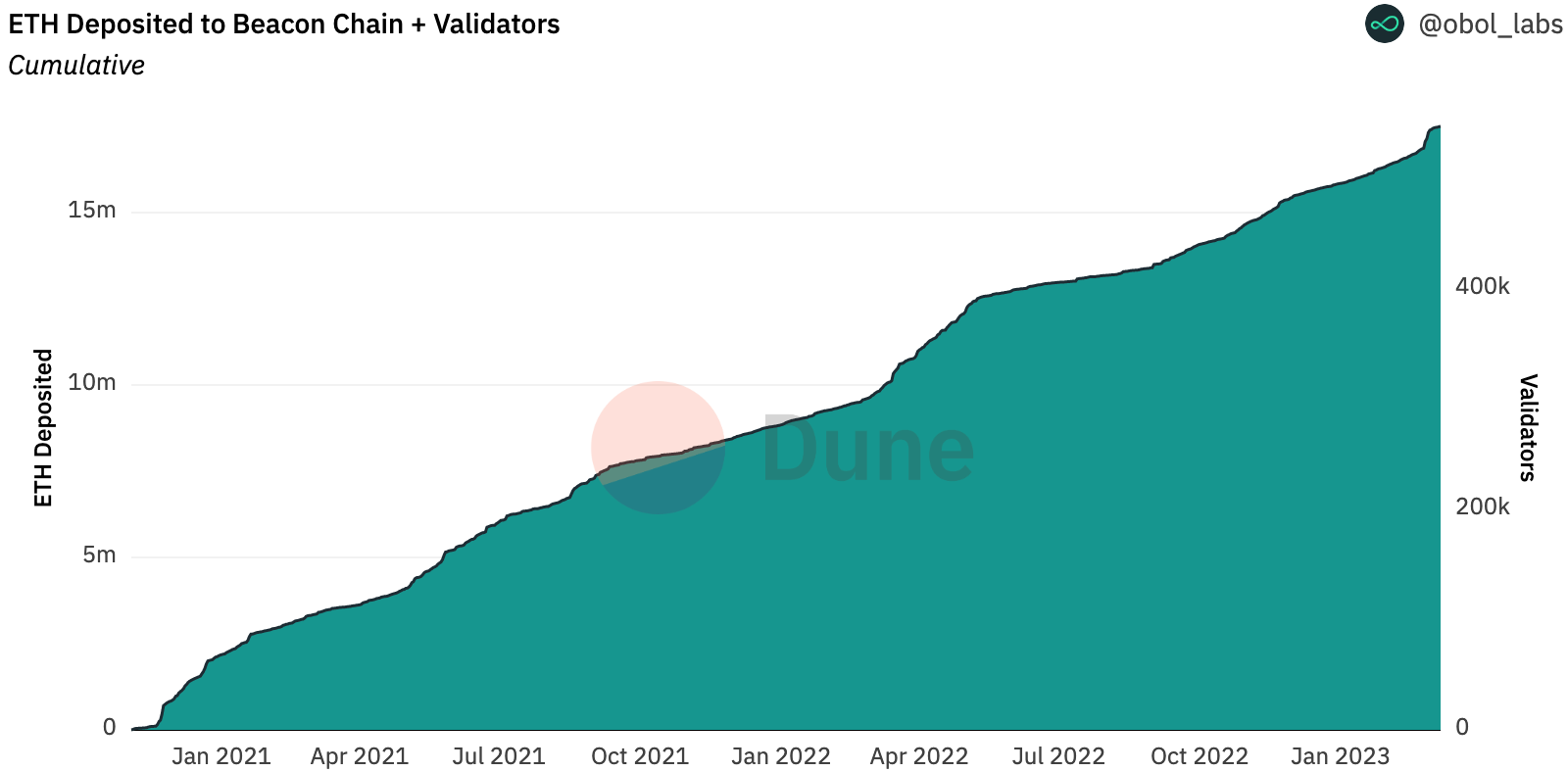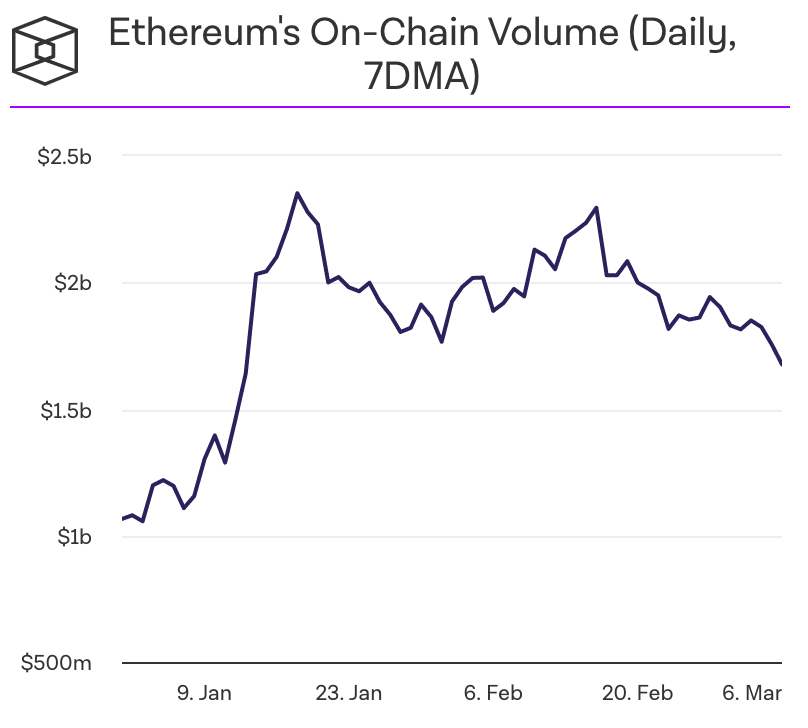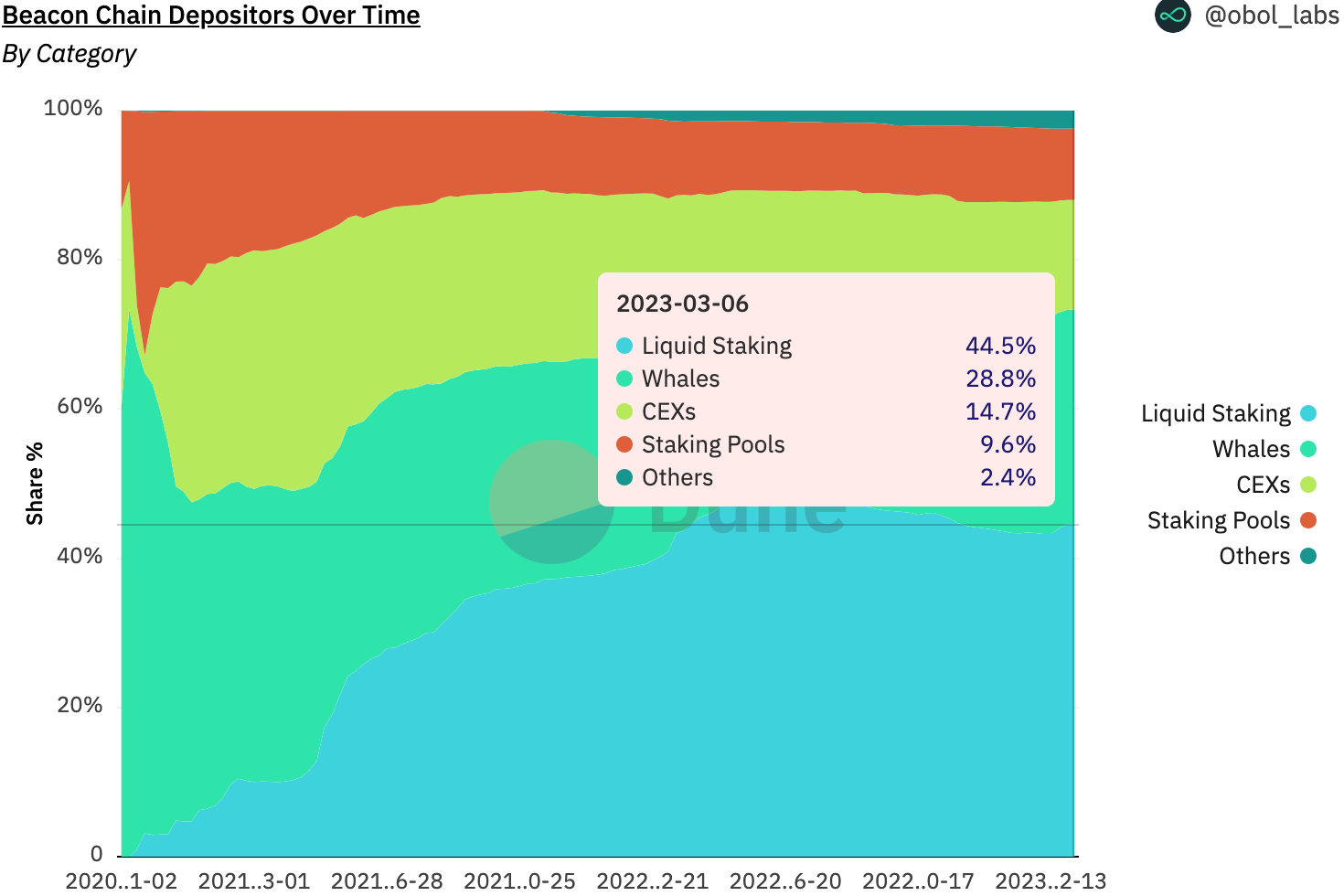Trending Assets
Top investors this month
Trending Assets
Top investors this month
Withdrawals Are Coming!
After 5 long months, Ethereum’s next major network upgrade is just around the corner!

Bankless Writer: Jack Inabinet
The successful implementation of the Merge in mid-September meant Ethereum completed its long-awaited transition from Proof of Work to Proof of Stake, reducing energy consumption by 99.95% and ETH issuance by 88%.
Post-Merge Ethereum is secured by stakers, instead of miners, each posting 32 ETH as collateral for the ability to store network data, process transactions, and add blocks to the chain; stakers accrue ETH rewards for securing the network.
Termed “Shapella,” Ethereum’s latest hard fork includes two major upgrades: Shanghai - an execution layer upgrade, and Capella - a consensus layer upgrade. Together, the two will allow stakers to withdraw both accrued staking rewards and their initial 32 ETH node collateral.
Ethereum’s validator count was one of crypto’s few up-only metrics during 2022, given the inability for existing stakers to exit the validator set. Over the past 30 days, the number of validators has increased by 6%!

Shapella alters the paradigm, presenting stakers the ability to withdraw both accrued rewards and their initial node collateral!
Today, we’re trying to answer the questions on every ETH HODLers’ mind…
How will Shapella impact price?
While I lack the clairvoyance to peer into the post-withdrawal future and provide certifiably correct answers for this question, I can certainly present the prevailing arguments in a digestible format, adding subjective commentary along the way!
Remember, anon: DYORing is your key to success in crypto! This article in no fashion should be misconstrued as financial advice, however I highly recommend you incorporate the information below into your thought process as you work towards objectivity and attempt to form a holistic view of the post-withdrawal Ether landscape.

Withdrawal Process
To predict the potential impact of withdrawals on Ether price, it is crucial to understand the withdrawal process itself.
Withdrawal Queue
For stakers looking to withdraw accrued staking rewards (a partial withdrawal), the process is automatic, with partial withdrawals also avoiding the exit queue!
The withdrawal queue will process a combined maximum of 16 partial and/or full withdrawals per block, starting with the first validator established, working towards the most recently established validator, before restarting the process again at validator 0, similar to the hands of an analogue clock.
With 547.1k validators at the time of analysis, this process would take a maximum of 4.75 days for all stakers to receive accrued staking rewards and for the withdrawal queue to loop. Assuming all validators upgrade to 0x01-type credential, in slightly under five days post-Shapella, over 1M ETH in Consensus Layer rewards will become liquid.
Exit Queue
Full withdrawals are subject to the withdrawal queue and an additional exit queue. A much narrower bore, at the current validator set size, 8 validator exits can be processed per epoch, with the number of withdrawals that can be processed in a given epoch decreasing by 1 for every 65,536 validators that exit the set.
Additionally, full withdrawals are subject to a delay period, which varies depending on if the validator was slashed, something intended to disincentivize malicious behavior.
Potential Outflows
Shortly after withdrawals are enabled, over 1M Ether accrued as Consensus Layer rewards will become liquid, representing the largest slug of potential ETH sell pressure.
Data from The Block shows that on January 18th, seven-day moving average (7DMA) ETH exchange and on-chain trading volumes peaked at a combined $6.28B. At the time of analysis, 1M ETH is worth approximately $1.56B, representing slightly under 25% of the maximum 7DMA ETH trading volume.
With staking rewards becoming liquid over the course of 4.75 days, however, the maximum daily sell volume represents slightly over 5% of maximum combined 7DMA volumes.
It is worth noting, however, that withdrawal bulls may be discounting market illiquidity.
While the scenarios above contemplate trading volumes at 2023’s highs, we have also seen 7DMA moving average exchange and on-chain ETH trading volumes at a combined $2.43B.
Trading volumes have continued to trend downwards off of January 18th’s highs, and unexpectedly large post-Shapella rewards sell pressure could nuke the entire narrative that withdrawals are a net positive, causing apprehension in traders that may have considered bidding and creating a self-fulfilling, downward spiral prophecy.

Source: The Block
In terms of structural flows, after the initial 27-hour waiting period has passed – and assuming each validator has a balance of 32 ETH – a monstrous 57.6k of ETH is set to unlock daily for 11 days, reducing to 50.4k ETH over the next 41 days, and continuing to fall over subsequent months if continued staking outflows occur.

Data Source: Ethereum.org
To put the magnitude of this supply into perspective, the heavily hyped Merge, while deflationary, has removed a meager 48k ETH since September 15: ETH burn is inconsequential compared to anticipated post-Shapella flows.
Operators
Not every staker is made alike.
LSD HODLers are the least likely to sell: they have already had liquidity on their stake and accrued rewards have already been captured in the market prices of liquid staking tokens and have previously benefited from liquidity on their stake. Liquid staking protocols, inclusive of Coinbase, represent 44.5% of Beacon Chain depositors; slightly under half of the initial reward selling pressure has been reduced!

Source: Dune Analytics
Some on CT have argued that staking pools and CEXs, representing an additional 24% of all staked ETH, have financial incentives to continue staking operations, and thus incentives to block withdrawals. However, it is possible that consumer demand pushes these providers to offer withdrawals of ETH, or risk damaging brand reputation while similar providers liquify stake.
Whales and “others” are more likely than fellow cohorts to view validating as a key part of providing security to Ethereum, rather than a financial investment and yield generation opportunity. An argument can be made that they are the least likely sellers.
While I buy the narrative that LSD validators represent the least likely source of sell pressure, it appears false that CEX, SaaS, and smaller staking operations are unlikely to be sellers.
Financial conditions have changed dramatically from when these individuals staked and stakers needing liquidity will become forced sellers. This belief that every category of staker is an unlikely seller is completely false and presents ETH HODLers with a false sense of security.
X (formerly Twitter)
korpi (@korpi87) on X
Staking Pools
SPs don't have any incentive to let stakers get their PW immediately.
It's more profitable to set up new validators.
Some SPs may also require "unbonding" periods to let stakers get their rewards.
I suppose a suppressed selling pressure here.
Already have an account?